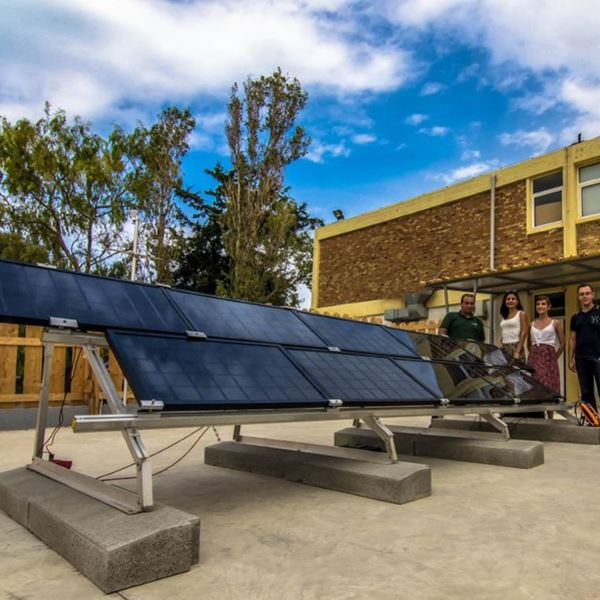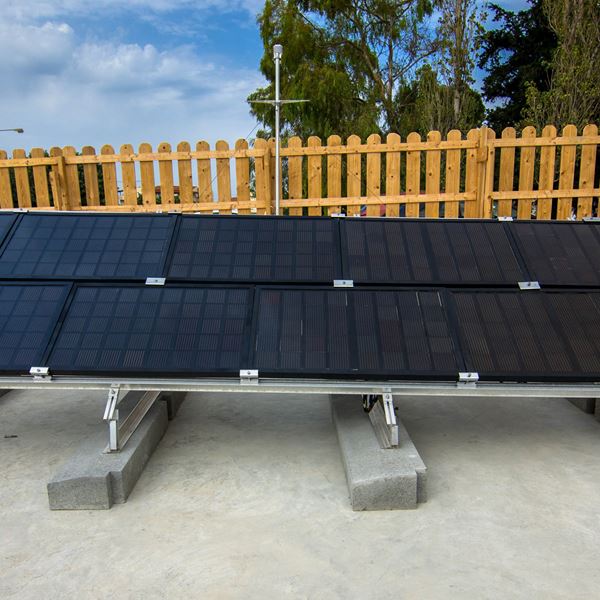
ARMS
Atomic Layer-coated Graphene Electrode-based Micro-flexible and Structural Supercapacitors
ARMS
Eco-friendly supercapacitors
Project Coordinator
Matti Mäntysalo, Tampere University, Finland

The ARMS project, short for Atomic layer-coated gRaphene electrode-based Micro-flexible and Structural supercapacitors, aims to create environmentally-friendly supercapacitors with high energy density (>50 Wh/kg), similar to batteries. By incorporating graphene-rich bio-based carbon materials and graphene-decorated carbon fibres and utilising scalable and cost-effective atomic layer deposition (ALD) manufacturing technology, the project seeks to maintain power density, cycle life and eco-friendliness. The ultimate goal is to establish a new value chain for supercapacitor manufacturing, with European small and medium-sized enterprises (SMEs) playing a key role in this innovative initiative.
Meeting new challenges
The outputs of the ARMS project, focusing on developing supercapacitors with enhanced energy density and cycle life, have diverse real-world applications. These advanced supercapacitors offer a sustainable and cost-effective alternative to conventional batteries, featuring large amounts of graphene on the surface of electrode materials but formulated so that macroscopically useful quantities of the material can be used. The sustainability, scalability and enhanced functionalities of the developed supercapacitors make them versatile solutions for a range of industrial processes and consumer products. The applications include consumer electronics (remote controls, Internet of Things (IoT) devices, fire alarms and other small wireless devices), toys and drones, and electric grid applications.
Although currently outside the project's scope, the enhanced functionalities of ARMS materials suggest a potential future application in electromobility. The supercapacitors developed within the ARMS project could contribute to advancing electric vehicle technology, providing an eco-friendly and cost-effective alternative to traditional batteries.
The project addresses the performance gap between batteries and supercapacitors using 2D materials, aiming to enhance energy storage technologies. This effort could lead to improved energy density, environmental sustainability and technological innovation within the European ecosystem of 2D materials. Successful outcomes may foster research collaboration, economic growth and increased competitiveness in the global market for energy storage solutions.
The ARMS project aims to tackle several critical challenges faced by Europe, including the aftermath of the COVID-19 pandemic, the impact of climate change leading to extreme weather events and the geopolitical shift with the disruption in the supply of Russian fossil fuels due to the war in Ukraine. By focusing on developing graphene-enhanced, eco-friendly, bio-based carbon supercapacitors, ARMS seeks to provide a vital solution for renewable green energy in Europe. These supercapacitors are anticipated to offer energy densities comparable to batteries while maintaining power density and cycle life comparable to conventional supercapacitors. The project attend to the urgent need for sustainable energy storage solutions, especially in the context of achieving the goals outlined in the Green Deal.
Sustainable solutions
The ARMS project plays a vital role in helping Europe meet its sustainability goals by contributing to the Green Deal and aligning with the continent's objectives for a circular, climate-neutral and sustainable economy. By developing new technology solutions for portable energy sources, the project aims to outperform alternative technologies in terms of energy and power density, safety, stability, flexibility, lightweight, thinness and cost-effectiveness. The supercapacitors developed by ARMS will be designed to be entirely made of eco-friendly materials. They will be applicable to various sectors, from consumer goods and IoT objects to electrification of transport. The project's emphasis on sustainable materials and processes, such as bio-based carbon and environmentally friendly electrolytes, supports Europe's transition to a digitally led circular and climate-neutral economy.
The outputs of the ARMS project are expected to lead to a more environmentally friendly future through the development of supercapacitors with energy densities comparable to batteries. The use of eco-friendly bio-based carbon and metal oxides in the electrodes, along with sustainable fabrication processes, ensures that the materials are sourced and produced in an environmentally responsible manner. The project contributes to creating a sustainable and autonomous materials value chain for EU industrial ecosystems, promoting the use of naturally abundant and non-toxic materials. Additionally, the focus on sustainable-by-design materials in the production of supercapacitors enhances their functionalities while minimising the impact on worker health and safety. Overall, ARMS aims to establish a circular and sustainable economy by addressing environmental concerns throughout the entire lifecycle of the developed energy storage solutions.
New horizons
Over the next few years, the ARMS project has an ambitious roadmap encompassing various crucial activities. In the first year, the baseline synthesis parameters for both bio-graphene and wood-derived carbon nanomaterials will be established, laying the groundwork for subsequent research. Concurrently, benchmark and test procedures will be developed to evaluate electrode performance in hybrid electrolyte systems. Later, the focus will shift towards providing feedback on electrolyte interactions and presenting a Systems Safety by Design (SSbD) framework report outlining criteria for safety, sustainability and circularity assessments.
Executing the ARMS project's roadmap faces challenges in bio-graphene and wood-derived carbon nanomaterial synthesis, demanding rigorous experimentation and collaboration. Coordinating interdisciplinary activities requires effective communication and resource management while adapting to evolving industry standards. Benchmarking electrode performance in hybrid electrolyte systems entails iterative testing and collaboration with electrochemistry specialists.
Ensuring regulatory compliance and safety criteria within the SSbD framework requires engagement with regulatory experts and ongoing updates. The project's success relies on a holistic approach, combining technical expertise, collaboration and adaptability to ensure smooth progress aligned with industry standards and regulations.
Collaborations
Being part of the broader Graphene Flagship ecosystem presents a myriad of anticipated benefits. Firstly, the collaborative nature of the Graphene Flagship allows for unparalleled networking opportunities with leading researchers, experts and industry players in the field of graphene and 2D materials. This network fosters knowledge exchange and opens avenues for potential collaborations and partnerships.
Secondly, being part of the Graphene Flagship ecosystem enhances visibility and credibility within the scientific and industrial communities. The association with a renowned and collaborative initiative strengthens our position as a noteworthy player in the graphene domain. This enhanced visibility can attract funding opportunities, partnerships and collaborations that may not have been possible without the support of the Graphene Flagship.
Moreover, participation in Graphene Flagship events adds a dynamic dimension to these benefits. The project organises various events tailored for researchers, industry professionals and early career researchers. These events serve as invaluable platforms for inspiration, encouraging us to engage in better research, innovation and collaboration. The exchange of ideas and experiences in these events is expected to enrich our perspective and fuel our commitment to excellence.
The ARMS project will contribute to the Graphene Flagship community by actively engaging in cutting-edge research, sharing insights at community events and fostering collaborative partnerships. Through these efforts, we aim to enhance the collective knowledge base, contribute to the community's goals and increase visibility and credibility, ultimately working towards advancing graphene-related technologies and fostering innovation within the Graphene Flagship ecosystem.
Partners
Tampere University, Finland
KTH Royal Institute of Technology, Sweden
CIDETEC Energy Storage, Spain
InnoCell ApS, Denmark
Institute of Solid State Physics, University of Latvia, Latvia
Latvian State Institute of Wood Chemistry, Latvia
University of Southern Denmark, Denmark
AIMEN Technology Centre, Spain
Beneq Oy, Finland
Chalmers University of Technology, Sweden
Related articles


Life cycle assessment of graphene and related materials-1
Graphene can be produced using a range of methods, but what are the most sustainable options? To answer this question, Graphene Flagship researchers published three studies related to the sustainable production of graphene related materials and their life cycle assessment – the best tool to evaluate the environmental footprint of a product or material.

Materials of the future - Graphene and perovskites
Making progress in photovoltaics

